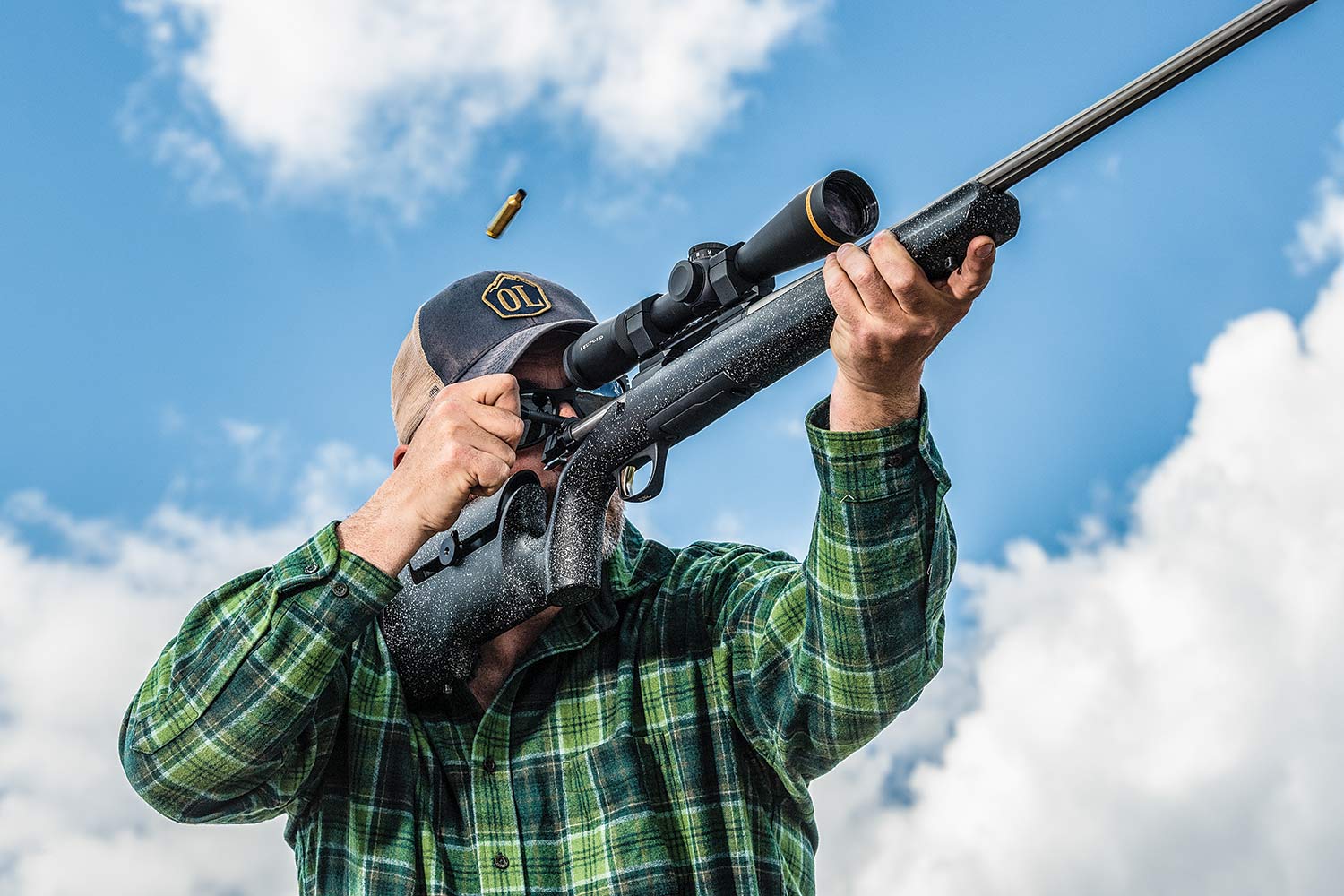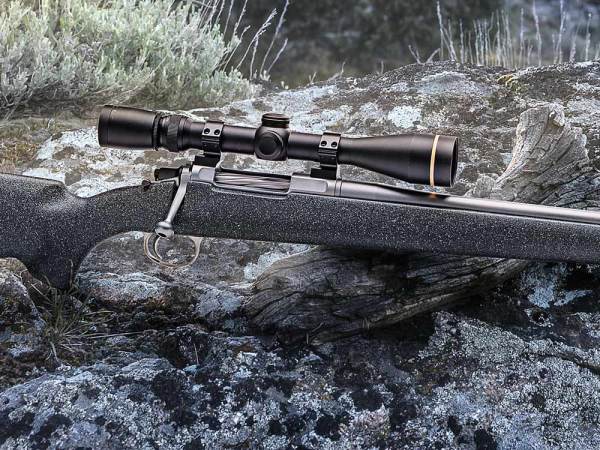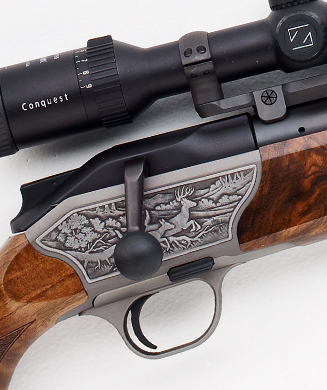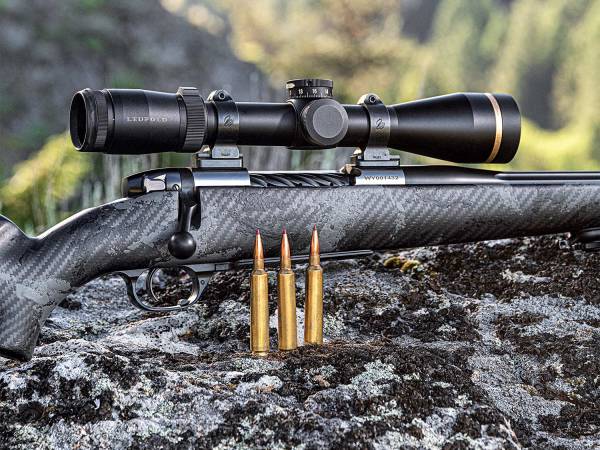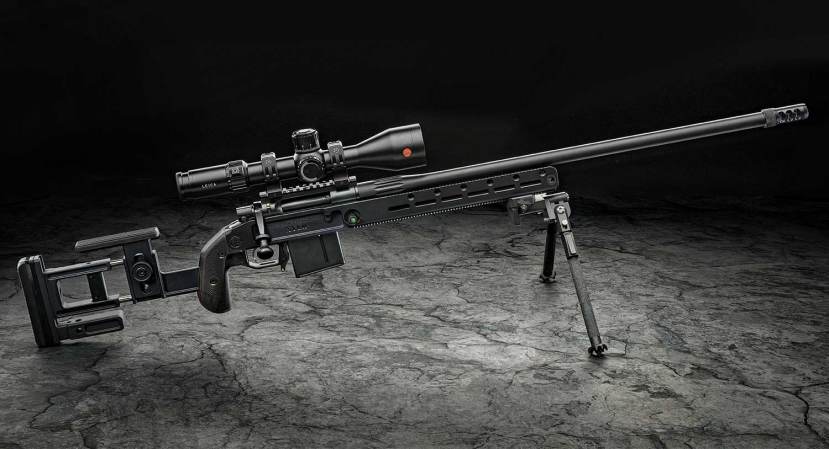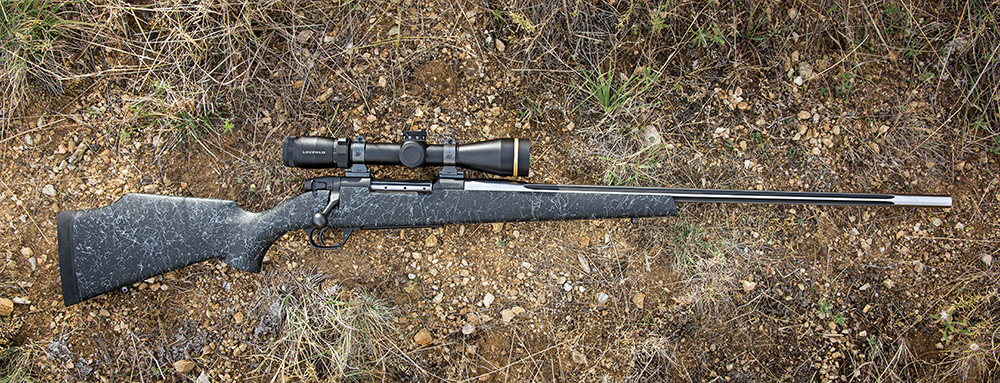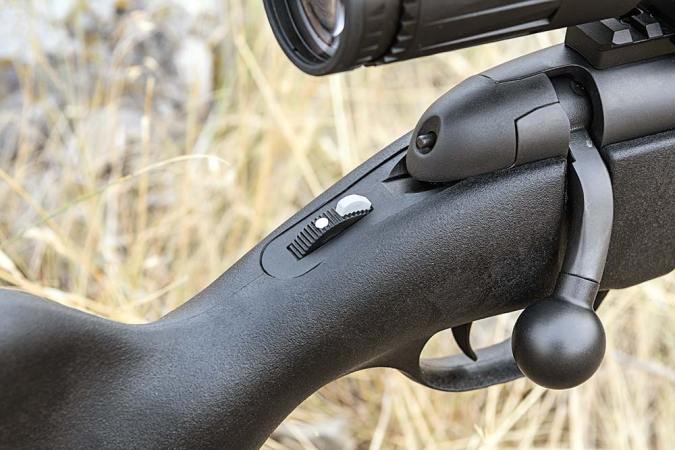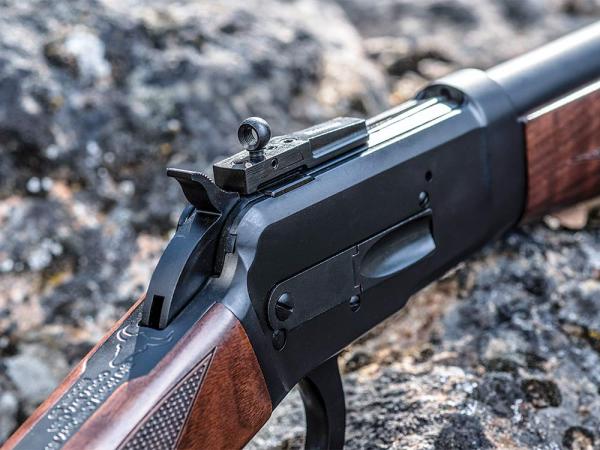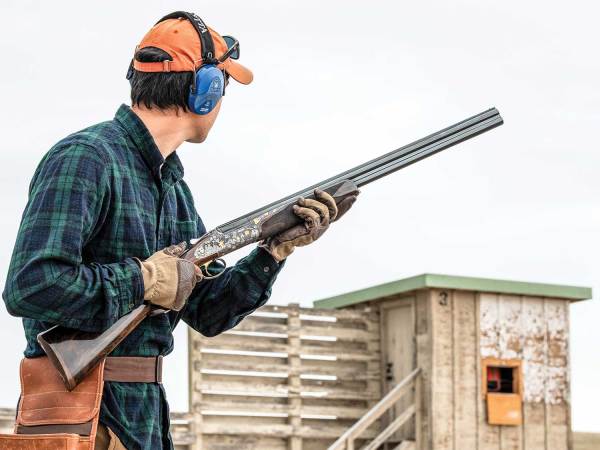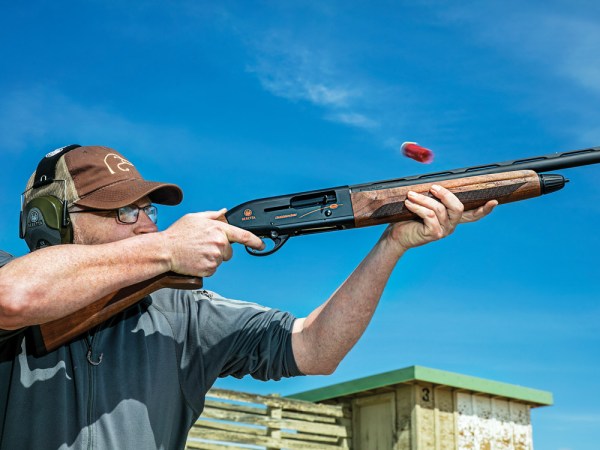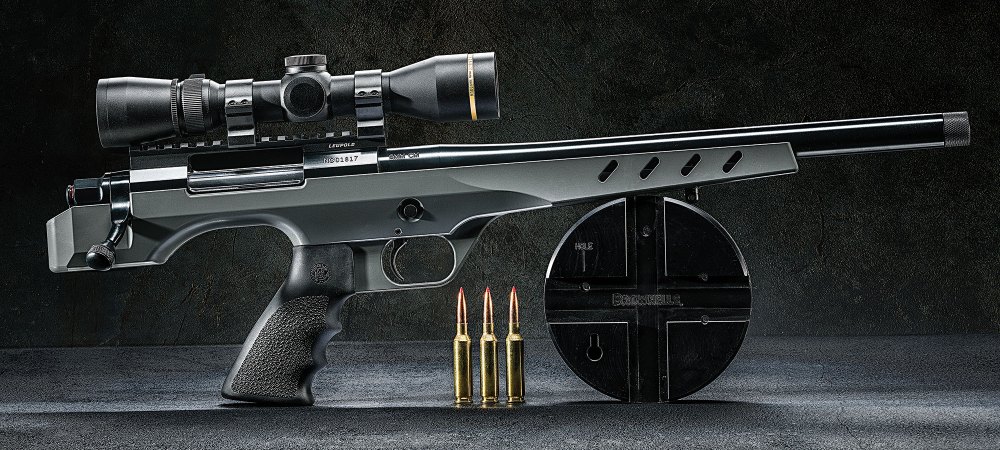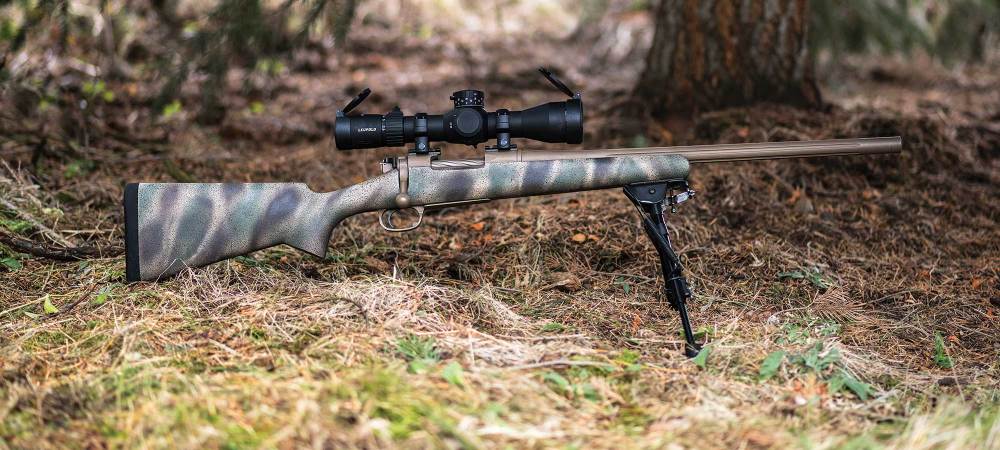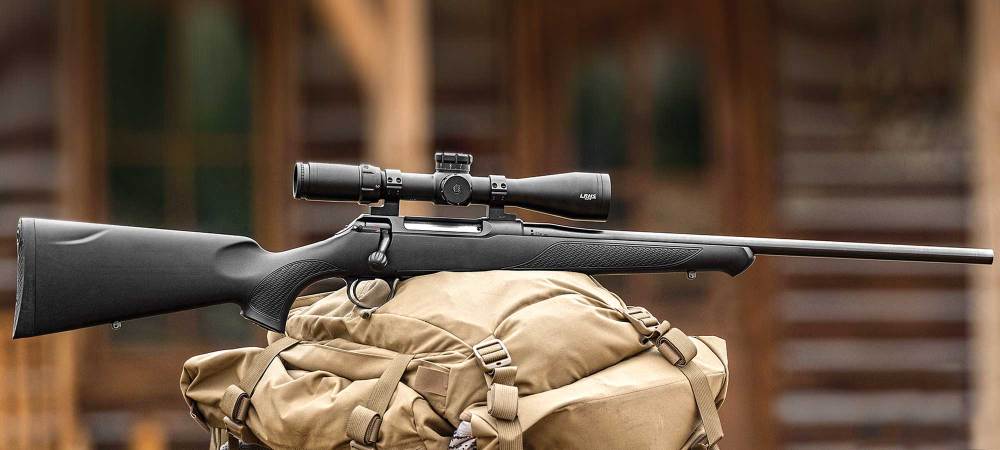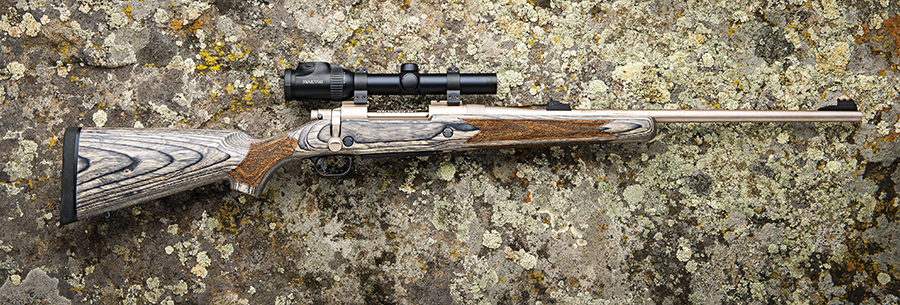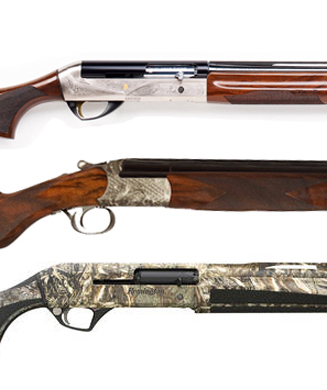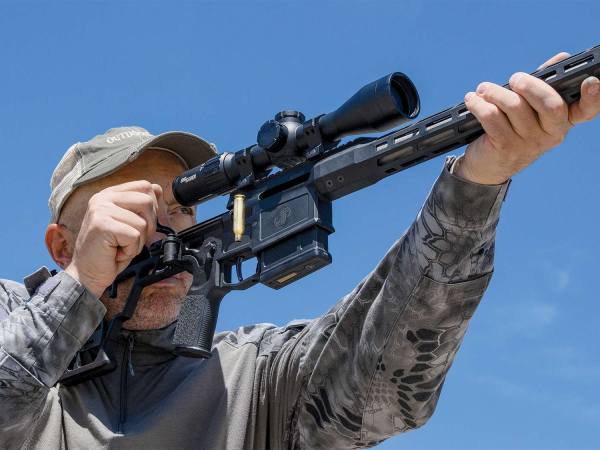We may earn revenue from the products available on this page and participate in affiliate programs. Learn More ›
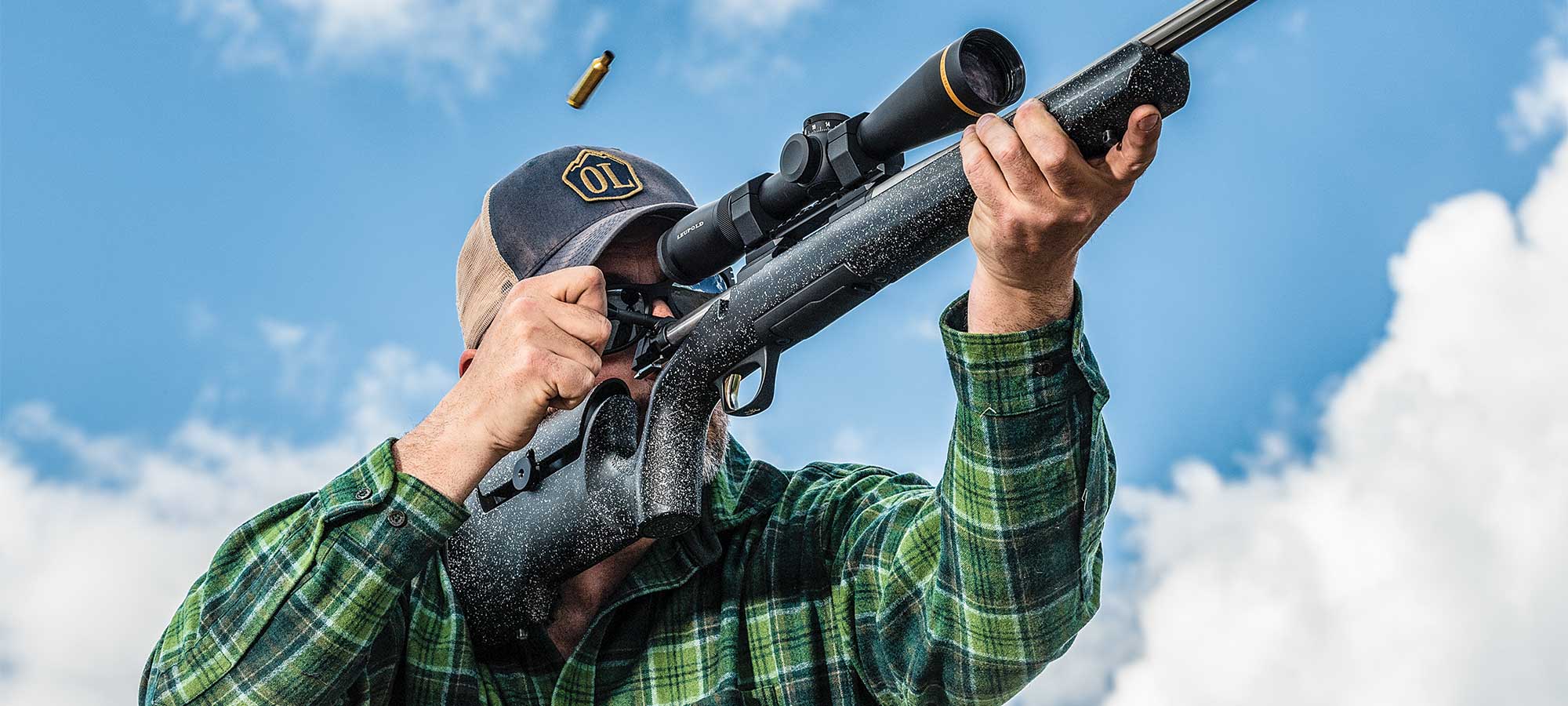
Okay I get it. In times of uncertainty and change, it is tempting to seek comfort in the traditional and spurn the new. If it helps put anyone’s mind at ease, let me say this No, there is nothing wrong with your old Savage .30/06. It will still kill deer and no one is suggesting otherwise.
But as you’ll see here, with a few exceptions, the newest crop of rifles doesn’t look much like what you’d find in the gun rack at your daddy’s whitetail camp. (If you’re looking for more classic designs, you might check out this year’s field of new shotguns).

These new rifles are built on chassis stocks, have carbon-fiber components, and are chambered in either 6.5mm or 6mm Creedmoor, a fact that has triggered cross-eyed rage among some who wish we could have stopped the clock with the introduction of the .270 Winchester, or better yet, the Mauser 98. But if you look closely, you’ll see plenty of variety in this new field of rifles, and you just might find a new one to add to the old gun rack.
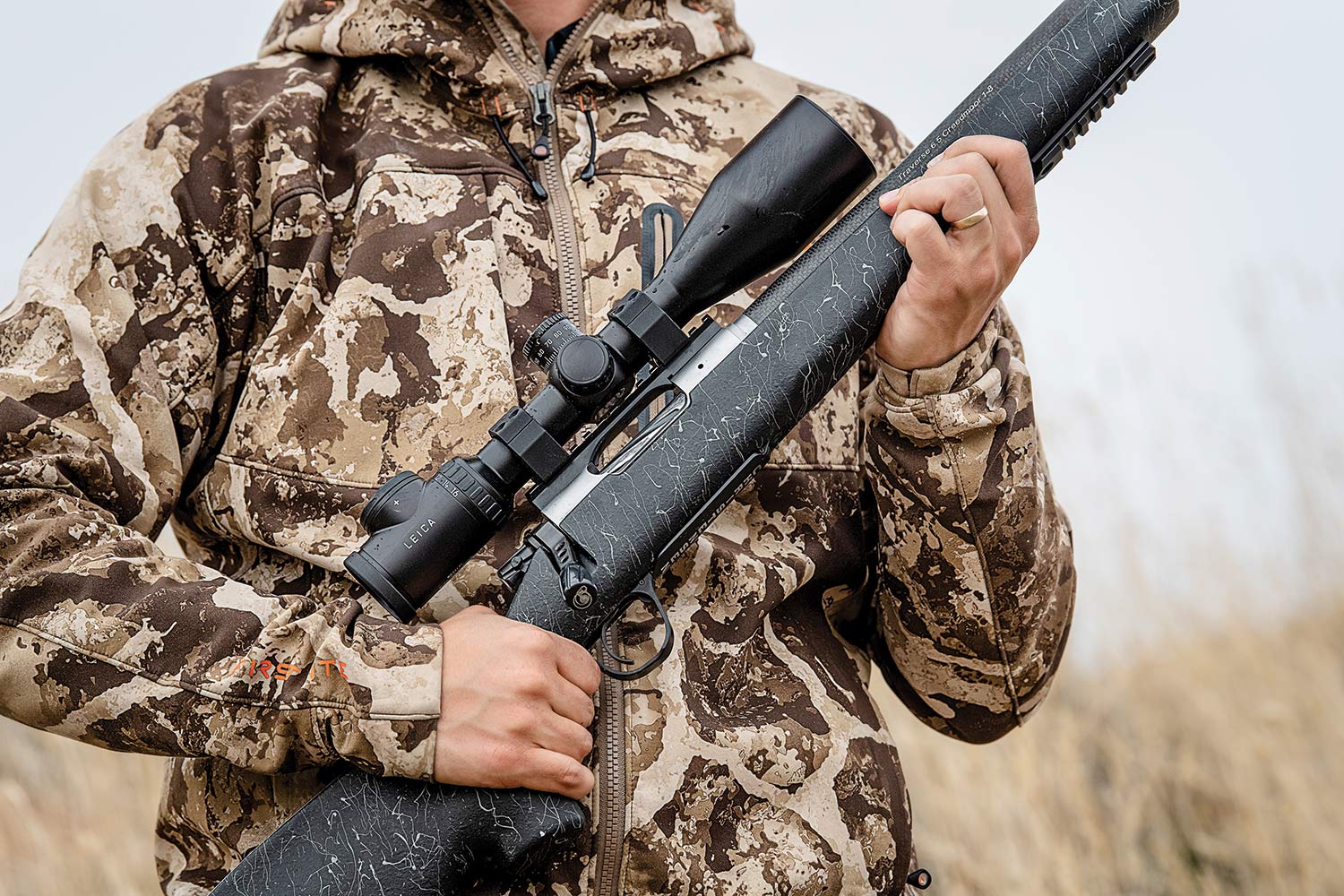
- Handling: Very Good
- Accuracy: Very Good
- Workmanship: Excellent
- Aesthetics: Excellent
- Ergonomics: Very Good
- Meets: Purpose Excellent
- Versatility: Excellent
- Reliability: Very Good
- Value: Good
The Traverse is a solid rifle that conveys an impression of heft and substance. The stock has an oversize Monte Carlo cheekpiece, a large, nearly vertical grip with a palm swell, and a wide, flat fore-end with a beavertail contour. The thick carbon-fiber barrel, topped with an imposing (and effective) muzzle brake, completes the image.
For the test team, this beefy rifle felt equally sturdy in hand. The bulk is in all the right places, enhancing the rifle’s ergonomics and performance whether you’re shooting off sandbags at the bench or in a practical field position. Settling in behind the Traverse is like taking the wheel of a luxury SUV. Not only is it super comfortable, but you also feel like you can handle anything Mother Nature might throw your way.
“It has almost everything a Western big-game hunter would ask for in a rifle” is how one judge summed it up.
One of those qualities is accuracy, and the Traverse delivered, turning in sub-3⁄4 MOA 5-shot groups with four different factory 6.5 Creedmoor loads. These included Hornady’s 143-grain ELD-X (.652 inch) and Nosler’s 140-grain AccuBond (.719 inch), both outstanding hunting bullets.
The Traverse’s two-lug action has an M16-style extractor and plunger ejector, and it comes with a spiral-fluted bolt and a skeletonized bolt handle.
So, between the performance and the aesthetic appeal, it isn’t surprising that this rifle is taking home the Editor’s Choice honors this year.

- Handling: Very Good
- Accuracy: Excellent
- Workmanship: Very Good
- Aesthetics: Good
- Ergonomics: Excellent
- Meets Purpose: Excellent
- Versatility: Good
- Reliability: Excellent
- Value: Very Good
Designed for the PRS Production Class, the BadRock South Fork delivers the goods. It was the most accurate rifle of the test (a .543-inch 5-shot group average, with the tightest measuring .200 inch), and it has a super-smooth action, which makes sense since BadRock’s parent company is Defiance Machine, the foremost maker of precision-rifle actions. The trigger was among the best of the test as well.
The aluminum chassis is functional, with good adjustments for stock dimensions. The finishes on the rifle are pretty plain—but that’s because all the investment went into making the South Fork one hell of a shooter.

- Handling: Good
- Accuracy: Very Good
- Workmanship: Very Good
- Aesthetics: Very Good
- Ergonomics: Good
- Meets Purpose: Very Good
- Versatility: Very Good
- Reliability: Very Good
- Value: Good
The Highlander is a solid offering from Bergara that isn’t trying to be anything other than a good all-around big-game rifle. The rifle has a rugged camouflage stock and Cerakoted metalwork that enhance durability, plus a no-nonsense two-lug bolt action that isn’t going to let you down. Its accuracy was very good, and at just over 8 pounds, it is portable enough to take on any hunt. When mounting a scope, we’d opt for a two-piece base to make loading it easier.
The barrel is threaded for a muzzle device, which is a nice touch, but in 6.5 Creedmoor, the gun shoots softly enough that it isn’t necessary.

- Handling: Good
- Accuracy: Very Good
- Workmanship: Good
- Aesthetics: Fair
- Ergonomics: Good
- Meets Purpose: Good
- Versatility: Good
- Reliability: Good
- Value: Very Good
The first bolt action bearing the CVA name is an affordable synthetic-stocked big-game rifle that will appeal to budget-conscious hunters. Despite its entry-level price tag, the CVA has a couple of extras that separate it from the competition. The threaded muzzle, an extra swivel stud for a bipod, and good texturing on the stock are selling points. But we found the rifle’s felt recoil to be a bit harsh and the aesthetics to be lacking. The rifle shot fairly well for us off the bench (average group size was .841 inch), but we did have some issues when single-feeding rounds during the dynamic shooting drills, which cost the rifle some points.

- Handling: Good
- Accuracy: Excellent
- Workmanship: Very Good
- Aesthetics: Good
- Ergonomics: Very Good
- Meets Purpose: Very Good
- Versatility: Good
- Reliability: Very Good
- Value: Good
There’s much to like about the Delta 5, which is Daniel Defense’s first foray into the bolt-gun market. The three-lug action is smooth and easy to run. The flush-mounted bolt release is a cool innovation. The rifle has a serious badass vibe that’s certain to win fans. And the ergonomics on the stock are outstanding—with one unfortunate exception. The ambidextrous grip design is among the best I’ve seen—it’s comfortable and gives great trigger control—but the adjustable cheekpiece has a sharp edge at the rear that bites the shooter’s face under recoil. It’s a rookie mistake that I hope the company corrects.
- Handling: Very Good
- Accuracy: Excellent
- Workmanship: Very Good
- Aesthetics: Good
- Ergonomics: Very Good
- Meets Purpose: Excellent
- Versatility: Excellent
- Reliability: Excellent
- Value: Excellent
Browning has been on a roll of late, producing accurate hunting rigs geared toward long-range shooting and hunting. It’s got another winner—the 2019 Great Buy, to be precise—in the X-Bolt Max Long Range Hunter.
If this rifle were in the Majors, we’d describe it as a five-tool player. It does everything well. Before talking about its performance, however, the detail that really caught our attention is its price.

At just $1,270 (MSRP, not street), this rifle is a heck of a bargain. By making its own stock, rather than working with an outside vendor, Browning was able to shave a lot off the cost.
The stock has some competition features, like a broad, flat fore-end, a vertical pistol grip, a small hook under the butt, and an adjustable cheekpiece.
We liked the overall ergonomics. The X-Bolt’s three-lug action is fast and easy to cock and run, and the trigger on our sample was pretty good too.
The flush-mounted rotary magazine is one of the best out there. It is easy to load, and it fed the 6.5 Creed cartridges perfectly every time. As we’ve come to expect with the Creed, the X-Bolt’s accuracy was excellent, averaging .743 inch for 5-shot groups, including a .330-inch group with Federal’s 140-grain SMK load.
Combine these attributes, and you have a rifle that is fun to shoot and a capable long-range hunter.

- Handling: Good
- Accuracy: Fair
- Workmanship: Good
- Aesthetics: Very Good
- Ergonomics: Good
- Meets Purpose: Good
- Versatility: Good
- Reliability: Very Good
- Value: Good
Chambered in the flat-shooting 6.5 Creedmoor, this quick-handling and handy lever action would make a damn fine saddle gun or Northwoods stalking rifle. It’s fed by a detachable box magazine that’s easy to load and insert, and its lines aren’t marred by an extraneous safety.
We enjoyed shooting it off-hand more than off the bench, where its accuracy was adequate (1.508 inches on average) but not inspiring. The lack of precision, especially for a 6.5 Creedmoor, made us question the rifle’s versatility, though it is a nice option to allow lever-action fans to get on the Creedmoor bandwagon.
Sign up for Outdoor Life’s newsletter for conservation news, hunting and fishing tips, and the hottest gear reviews.

- Handling: Very Good
- Accuracy: Good
- Workmanship: Very Good
- Aesthetics: Very Good
- Ergonomics: Very Good
- Meets Purpose: Very Good
- Versatility: Very Good
- Reliability: Very Good
- Value: Fair | Good
The Mountain Carbon has the lively feel and balance hardcore hunters look for in a rifle. The weight and balance are spot-on, whether you’re climbing a scree slope for sheep or just creeping down an old two-track looking for a buck on the move. The action itself had a bit of a tendency to bind and stick—a common occurrence in many bolt guns, but not what one would expect at this price point. We had a similar issue with the rifle’s accuracy, which averaged .998 inch for 5 shots. That’s good, but we were hoping for better. Aesthetically, the rifle’s a real looker, and its fit and finish are top-notch.

- Handling: Good
- Accuracy: Fair
- Workmanship: Good
- Aesthetics: Good
- Ergonomics: Good
- Meets Purpose: Good
- Versatility: Good
- Reliability: Good
- Value: Very Good
The metalwork and the laminate thumbhole stock on this rimfire are both nicely executed and give the rifle a racy look. The stock is also quite ergonomic and functional, with deep laser-engraved stippling on the grip and fore-end. If you want to quiet the rifle down, you can screw a suppressor onto the threaded barrel. Mechanically, the rifle struggled in some areas. The trigger is heavy and creepy, and the 10/22-style rotary magazine is a chore to load. The other controls mimic the 10/22 as well, including the bolt stop, safety, and magazine release, so shooters who like that platform will have another option to consider.
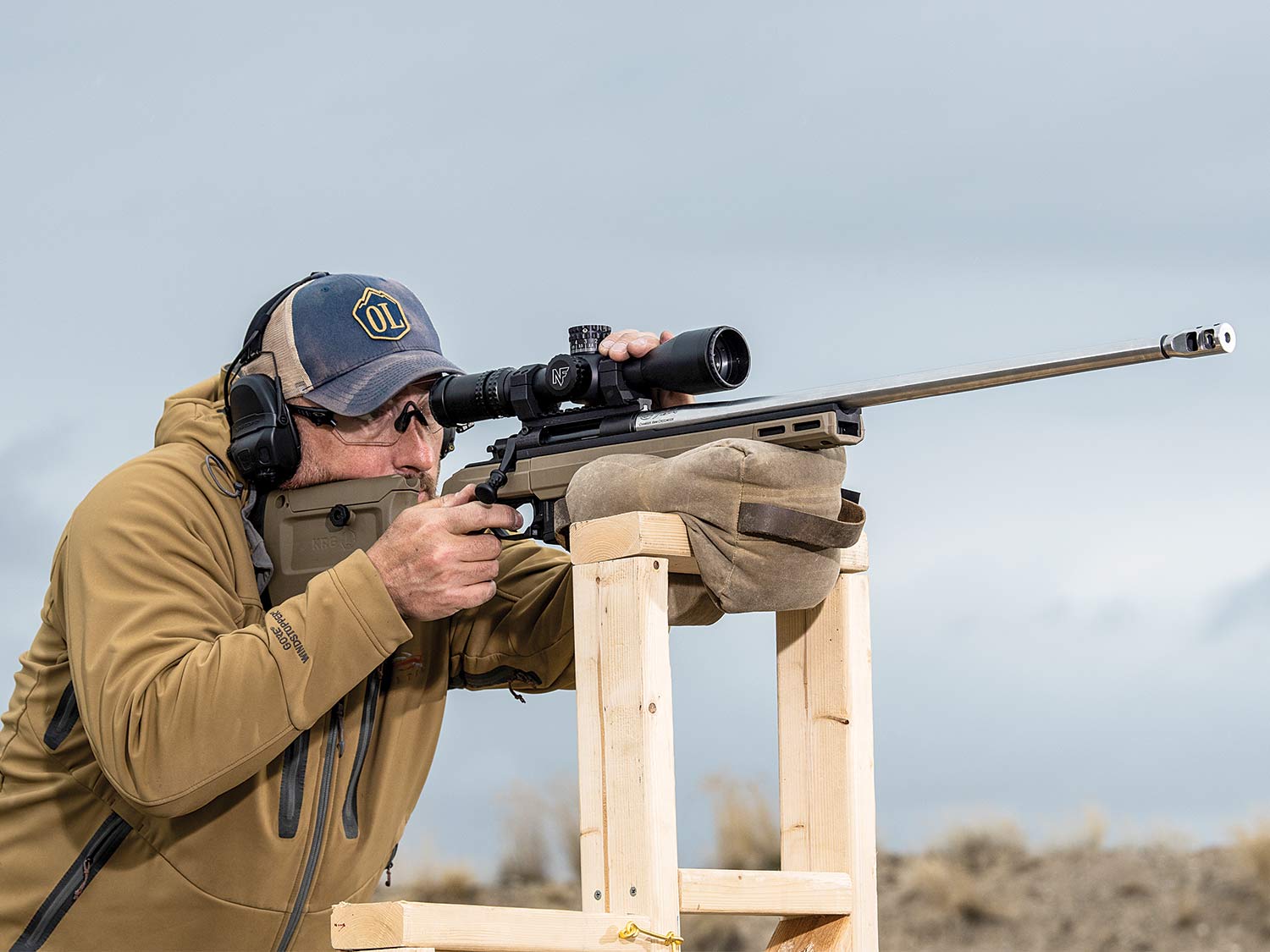
- Handling: Very Good
- Accuracy: Excellent
- Workmanship: Very Good
- Aesthetics: Very Good
- Ergonomics: Excellent
- Meets Purpose: Excellent
- Versatility: Good
- Reliability: Excellent
- Value: Very Good
This is one of three of this year’s new rifles that are designed for the Production Class in the Precision Rifle Series. All three are terrific rifles, but the John Hancock from Patriot Valley Arms emerged as the best of the bunch and nabbed the Editor’s Choice award.
To qualify for Production Class, a rifle must cost less than $2,000. But to be competitive, it must be accurate, rugged, adjustable for different shooting positions, and capable of handling stages with high round counts. The John Hancock checked all these boxes.
We were impressed with the rifle’s innovative three-lug Nucleus action, made by American Rifle Company. The action runs fast, doesn’t bind, and has a claw extractor and a mechanical ejector.
The KRG Bravo chassis is pretty basic but has the essentials, like an adjustable cheekpiece, a vertical pistol grip, and a flat fore-end, which works well for shooting off bags, barricades, and other obstacles.
Our rifle was chambered in 6 Creed, but you can also get it in 6.5 Creed, 6.5 PRC, .308 Win., 6mm Dasher, and 6mm BR.
Its accuracy was excellent, both off the bench, where it turned in 5-shot groups averaging .681 inch with factory ammo, and during our dynamic shooting drills, where we ran it as a shooter would in competition.
At 9.5 pounds, it can cross over as a hunting rifle too.They say to beware of the man who has only one gun. With the John Hancock, that could be you.

- Handling: Very Good
- Accuracy: Excellent
- Workmanship: Excellent
- Aesthetics: Excellent
- Ergonomics: Very Good
- Meets Purpose: Excellent
- Versatility: Very Good
- Reliability: Very Good
- Value: Fair
One of the testers put it best: Proof Research never fails to impress. From its muzzle to its butt, we were wowed by this new lightweight rifle’s looks, craftsmanship, and performance. The trigger is outstanding, the accuracy is excellent (.677-inch 5-shot group average), and it is blessed with fabulous stock ergonomics and an action that is solid and cycles with the smooth assuredness of a safe door swinging shut.
At just north of 6 pounds, it makes us want to climb the nearest peak and get after it. The other thing that wowed us was its price, which is as steep as the mountains it is meant to hunt.

- Handling: Very Good
- Accuracy: Fair
- Workmanship: Very Good
- Aesthetics: Very Good
- Ergonomics: Very Good
- Meets Purpose: Very Good
- Versatility: Fair
- Reliability: Good
- Value: Good
There are a lot of Model 7 fans on the test team, so we were happy to see Remington unveil this new version, which is equipped with an excellent stock from H-S Precision. The stock contains an aluminum bedding block and is as stiff as a shot of moonshine. Its raised spiderweb paint also creates a solid handhold for the shooter and looks good in the bargain.
We really liked the handiness of this nimble shooter, but the rifle didn’t always cycle very smoothly, and the accuracy was disappointing (1.34-inch 5-shot group average), especially for a 6.5 Creedmoor.

- Handling: Good
- Accuracy: Good
- Workmanship: Fair
- Aesthetics: Fair
- Ergonomics: Fair
- Meets Purpose: Good
- Versatility: Good
- Reliability: Very Good
- Value: Very Good
The latest iteration of Ruger’s American rifle comes decked out with a few upgrades, including a bronze Cerakote finish, a new camo pattern, a muzzle brake, and the ability to run detachable AI-pattern magazines. This rifle continues to be a solid value for the budget-minded hunter.
We shot a couple of very tight groups off the bench with Nosler’s 140-grain AccuBond and Remington’s 120-grain Barnes TSX, and, overall, the average group size was .962 inch. The rifle cycled fairly roughly, which cost it points, and it had difficulty at times with single-feeding rounds.

- Handling: Good
- Accuracy: Very Good
- Workmanship: Good
- Aesthetics: Fair
- Ergonomics: Good
- Meets Purpose: Good
- Versatility: Good
- Reliability: Good
- Value: Fair
Despite its name, the High Country is not a mountain rifle, but rather a good all-around big-game hunting rifle. Our sample, chambered in .30/06, lived up to Savage’s reputation for accuracy, turning in groups that averaged .859 inch, and one that measured .496 inch with Federal Premium’s 180-grain Nosler AccuBond load.
The trigger was delightfully crisp, and we all felt that the rifle handled really well, in part because of its just-right 8-pound weight. The stock is nicely designed, with adjustable dimensions for a customized fit, and it has tacky inserts for added grip.

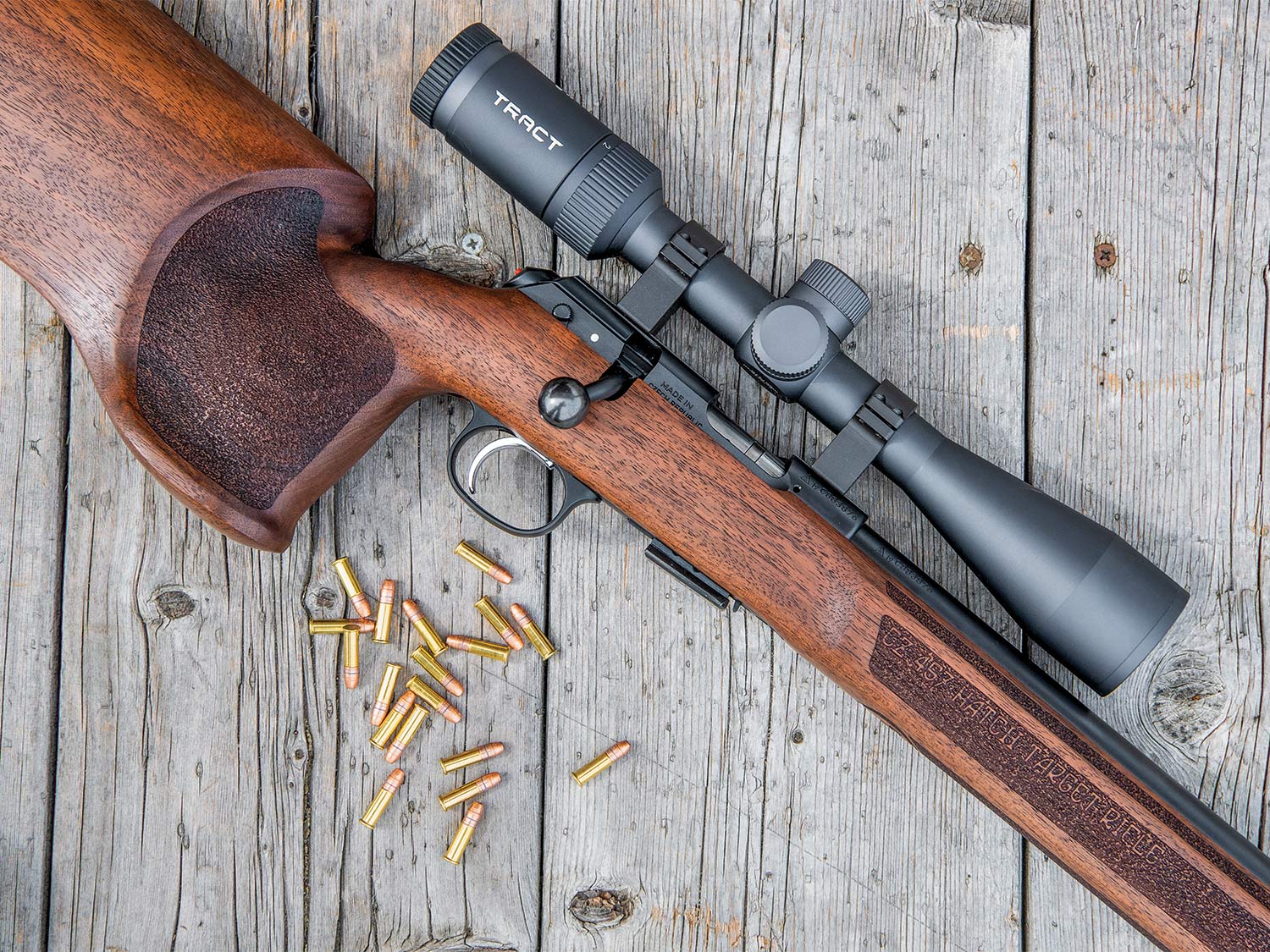
- Handling: Very Good
- Accuracy: Good
- Workmanship: Very Good
- Aesthetics: Very Good
- Ergonomics: Very Good
- Meets Purpose: Very Good
- Versatility: Good
- Reliability: Very Good
- Value: Very Good
This sweet little rimfire from CZ has some serious competition features worked in to its design, but at the end of the day, it won our hearts—and an Editor’s Choice award—by virtue of just being a blast to shoot.
CZ’s firearms have a long-standing reputation for their fine metalwork, and the 457 is no exception. All the machined surfaces have a clean, well-defined look, and the action, with its compact 60-degree bolt throw, runs in a crisp, precise manner. The dual extractors never failed to pull a spent round from the chamber, and the fixed mechanical ejector flung the empties away with gusto.
We are also happy to see the European overlords at CZ finally incorporate a rimfire safety that disengages when you push it forward, which is standard on American firearms, as opposed to pulling backward when moving from “safe” to “fire.”
The generously sized target stock is well designed for shooting off bags or with a bipod. For an adult, the 8-pound rifle can be shot from unsupported positions fairly easily, but a youngster would probably struggle with it off-hand.
The rifle is fed via a steel 5-round magazine that is easy to load and never had any failures to feed.
The trigger, which is adjustable for pull weight, overtravel, and take-up, has a crisp 2-pound 11-ounce break.
At $752 suggested retail, it isn’t a beginner rimfire, but we still considered it a very good value in light of all its great qualities.

- Handling: Very Good
- Accuracy: Excellent
- Workmanship: Very Good
- Aesthetics: Very Good
- Ergonomics: Excellent
- Meets Purpose: Excellent
- Versatility: Good
- Reliability: Very Good
- Value: Very Good
Glen Seekins has created another tack-driver, this one for precision-rifle competition, specifically PRS Production Class. Chambered in 6 Creedmoor, the Havak Bravo is match-ready out of the box. (It can also be had in 6.5 Creed, 6.5 PRC, and .308 Win.) With factory ammo—particularly Hornady 108-grain ELD Match—ours consistently grouped 5 shots between .520 and .655 inch.
The full-diameter four-lug bolt (two rows of two lugs) glides effortlessly in the receiver; the KRG Bravo chassis has great ergonomics; the barrel is threaded; and the fit and finish and overall workmanship are top-notch.

- Handling: Good
- Accuracy: Poor
- Workmanship: Fair
- Aesthetics: Fair
- Ergonomics: Good
- Meets Purpose: Good
- Versatility: Good
- Reliability: Good
- Value: Very Good
This is a fantastic first gun for a young shooter. The weight is manageable, and the stock dimensions are cut down. Even the 10/22-style magazine has been reworked to make it easier to get 10 rounds into it. It won’t break the bank. Most important, however, it is fun to shoot, with either the open sights or an optic on the Picatinny rail.
It also has an innovative design: The trigger group and bolt—which are part of the same assembly—can be removed with the single push of a button for easy maintenance.
We just wish Winchester had put more effort into refining the Wildcat’s looks.
Read Next: The Best New Hunting and Sporting Shotguns, Tested

- Handling: Good
- Accuracy: Poor
- Workmanship: Fair
- Aesthetics: Fair
- Ergonomics: Good
- Meets Purpose: Very Good
- Versatility: Fair
- Reliability: Good
- Value: Good
The brand-new 350 Legend cartridge and Winchester’s XPR rifle are a good match for each other. The straight-wall cartridge, which is a modified .223 Rem. with no bottleneck, fires 9mm/.357-caliber bullets and has a bit more horsepower than a .30/30 at the muzzle—meaning this is a viable deer cartridge out to about 200 yards. Like the XPR rifle, the ammo carries a blue-collar-friendly price—about the same as a box of .223.
The rifle has very little recoil, and the accuracy was adequate (1.89 inches) for close-range deer hunting. The single-stack detachable-box magazine holds four rounds.
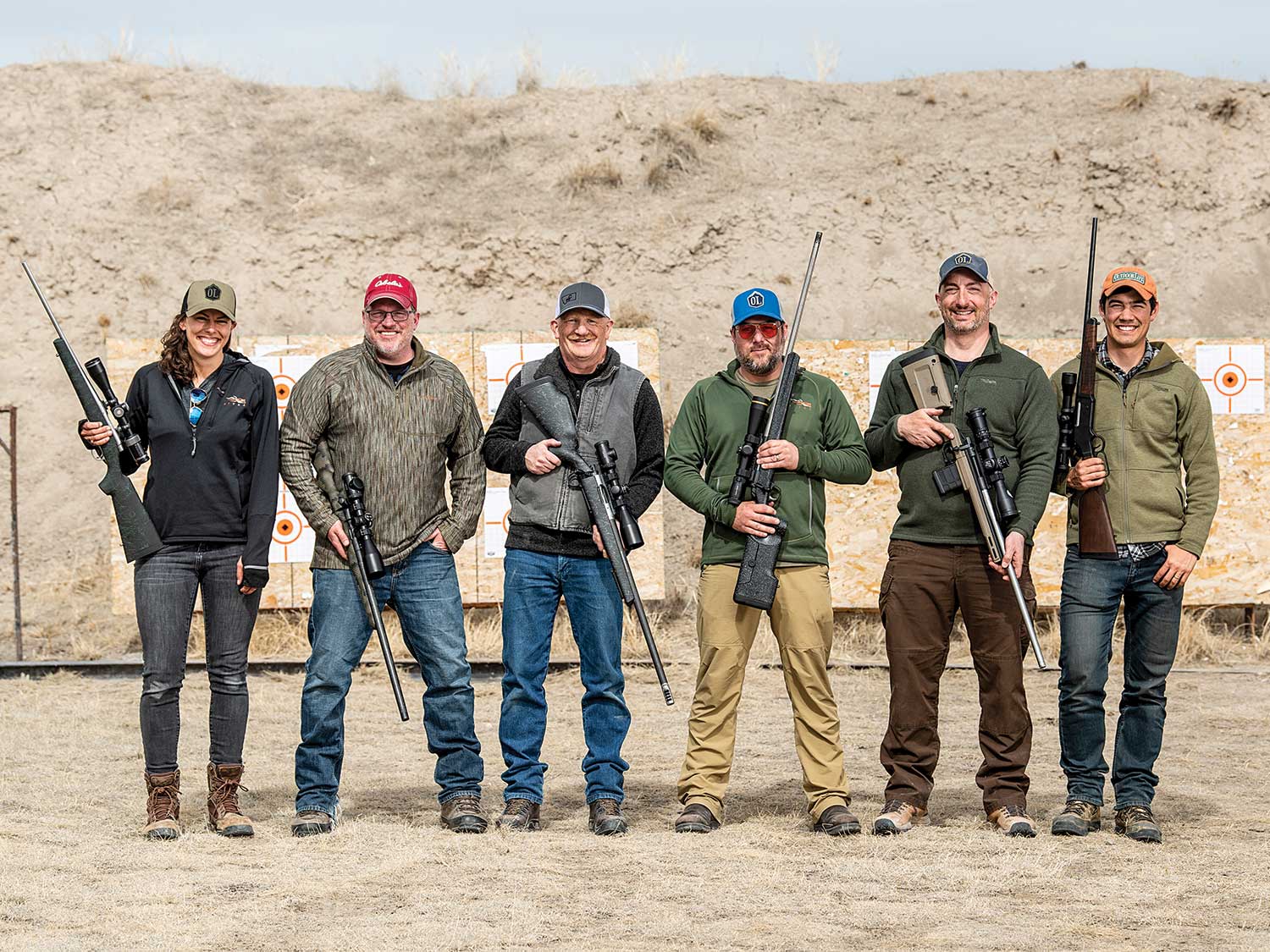
Showdown in Big Sky Country
As our team of judges has done for many years now, we gathered in Bozeman, Montana, home of shooting editor John B. Snow, to conduct the test. After settling into our base camp and stocking up on beers from Bozeman’s 13 breweries, we got down to business.
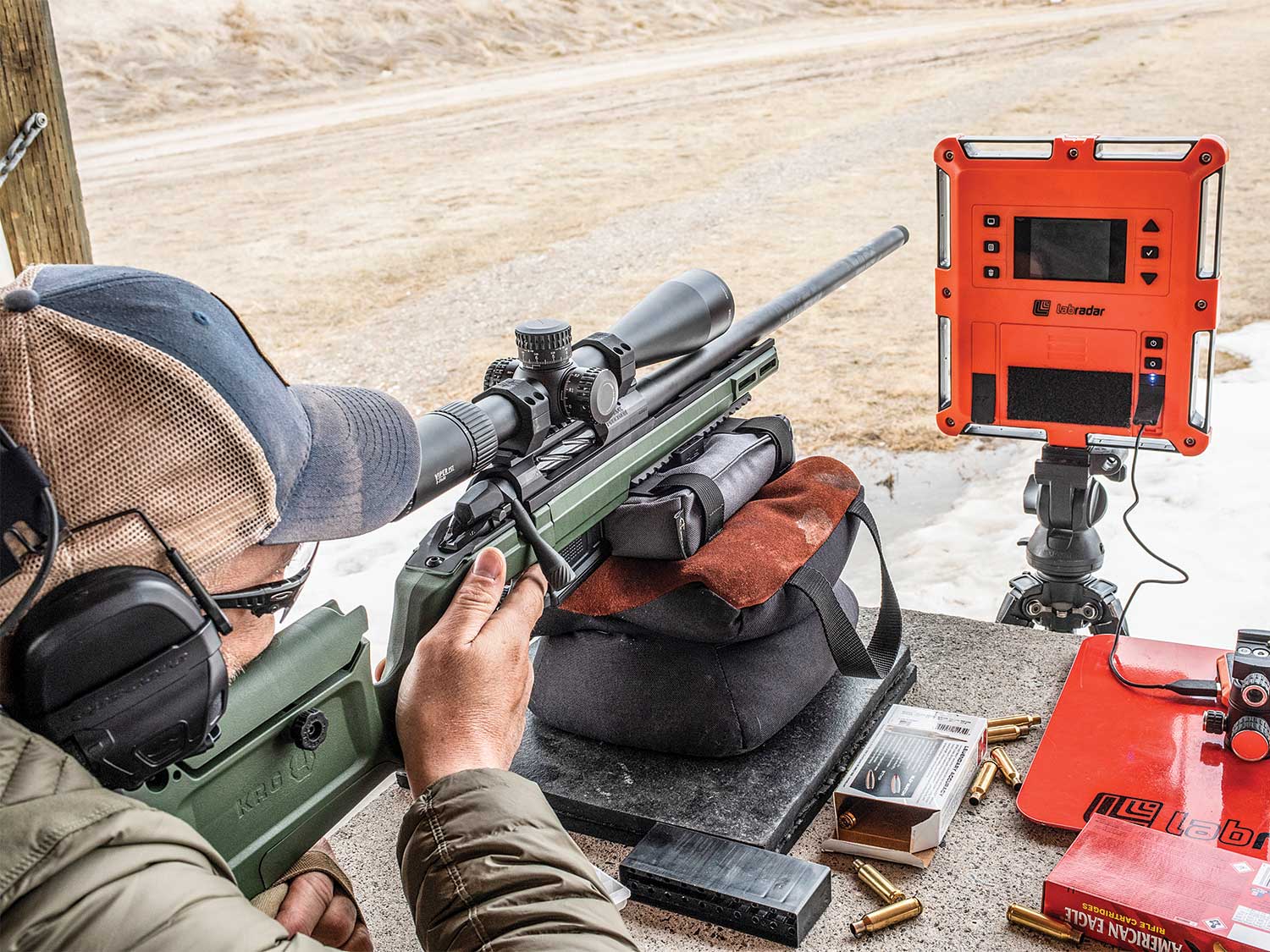
How We Test
The testing falls into three distinct phases. First, we gather all of the new rifles and shotguns and inspect them, collecting the empirical data concerning trigger pull, firearm weight, barrel and stock dimensions, and any new innovations to note in their design and function. We also make sure all of the fasteners have been tightened correctly—which is a step anyone taking possession of a new gun should do. You would be amazed—or perhaps more rightly distressed—to learn how often we find loose screws.
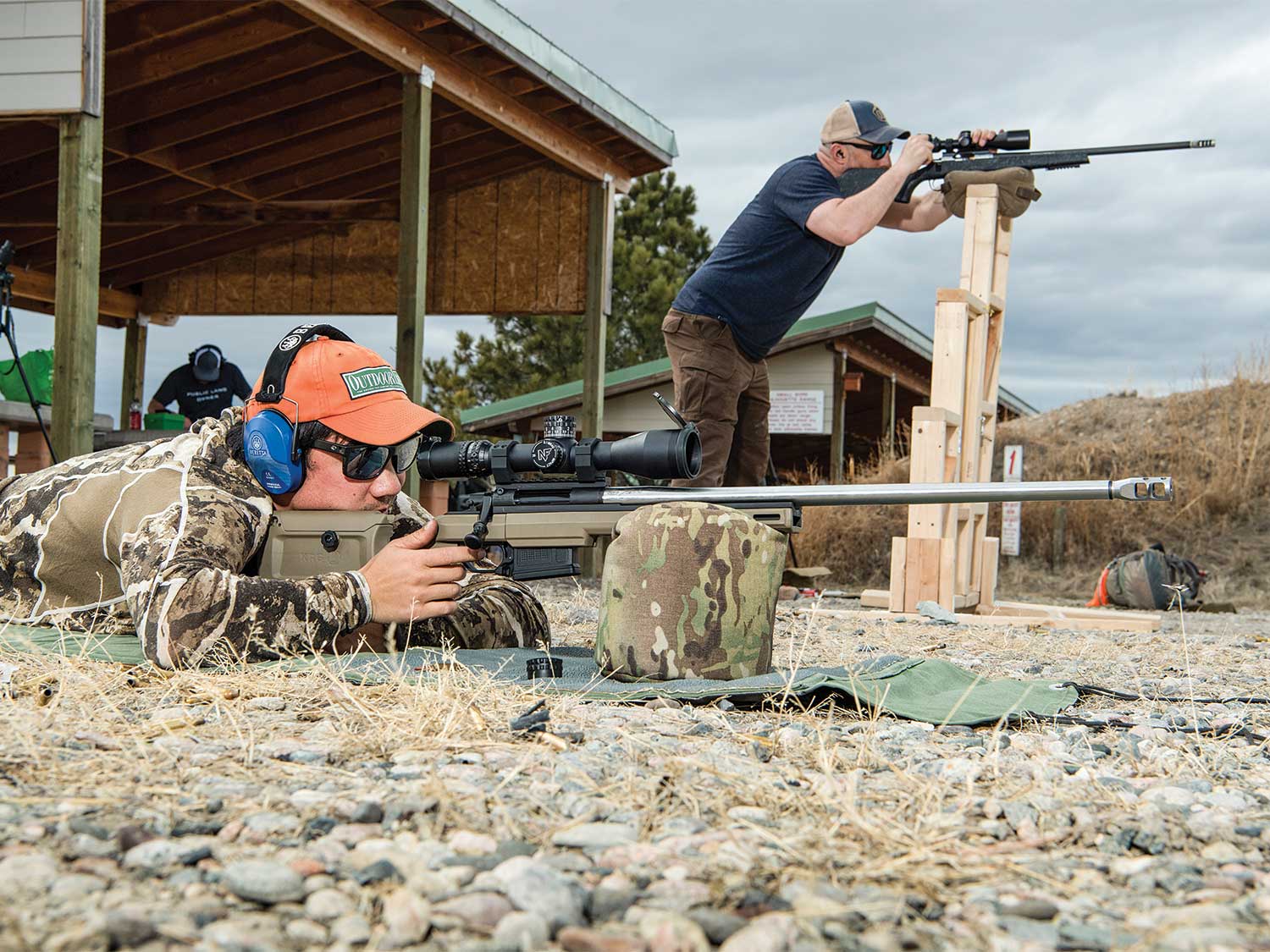
In phase two, the fun begins. We shoot the rifles for accuracy, using multiple bullet styles and weights. To determine a rifle’s accuracy, we take the average of the best ten 5-shot groups.
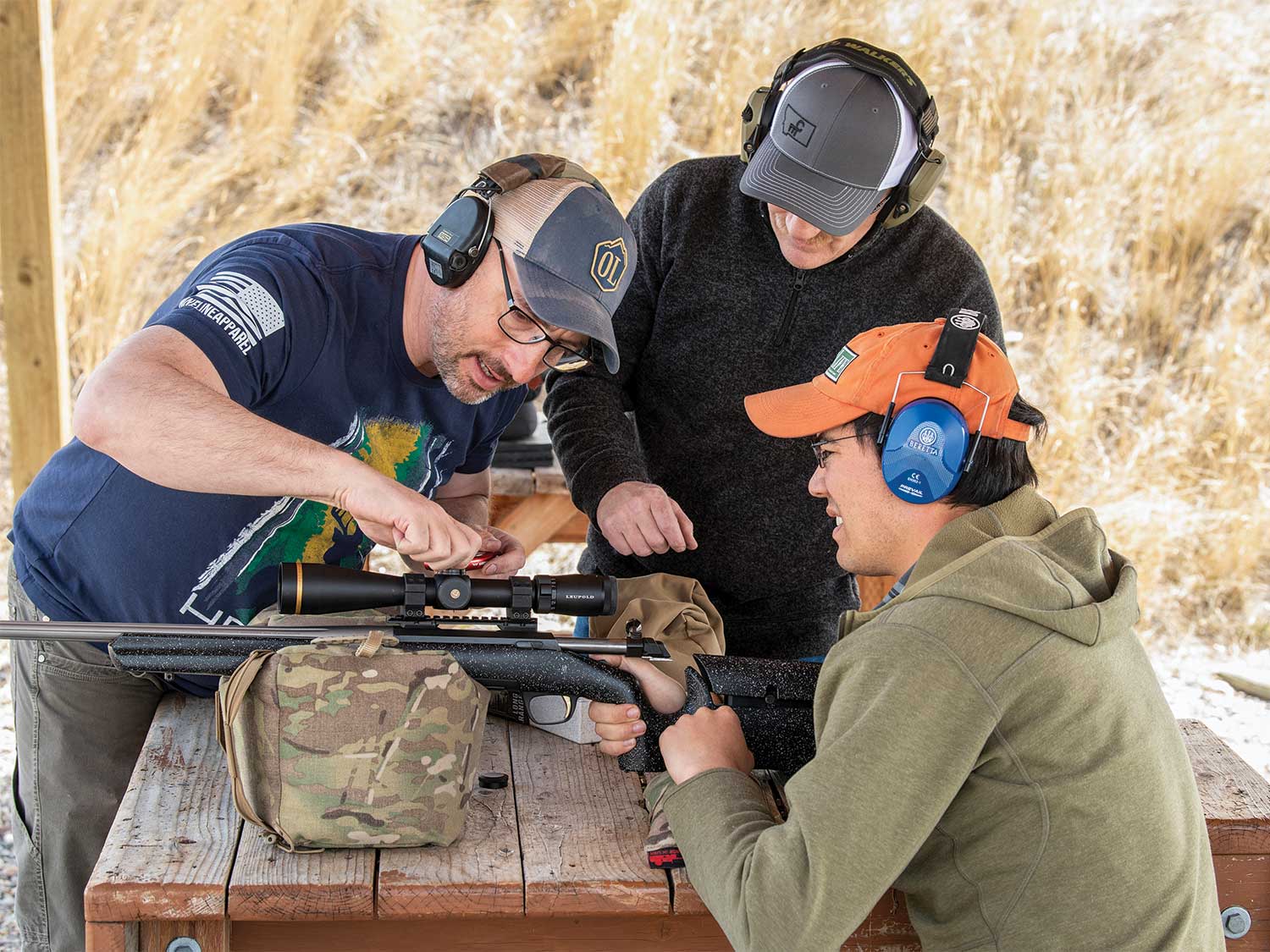
We also run the rifles through a series of drills to replicate how they’ll perform in the field. We hammer through full magazines as fast as we can, toss single rounds into the receiver to see if they’ll feed, and shoot from different positions to assess ergonomics and handling.
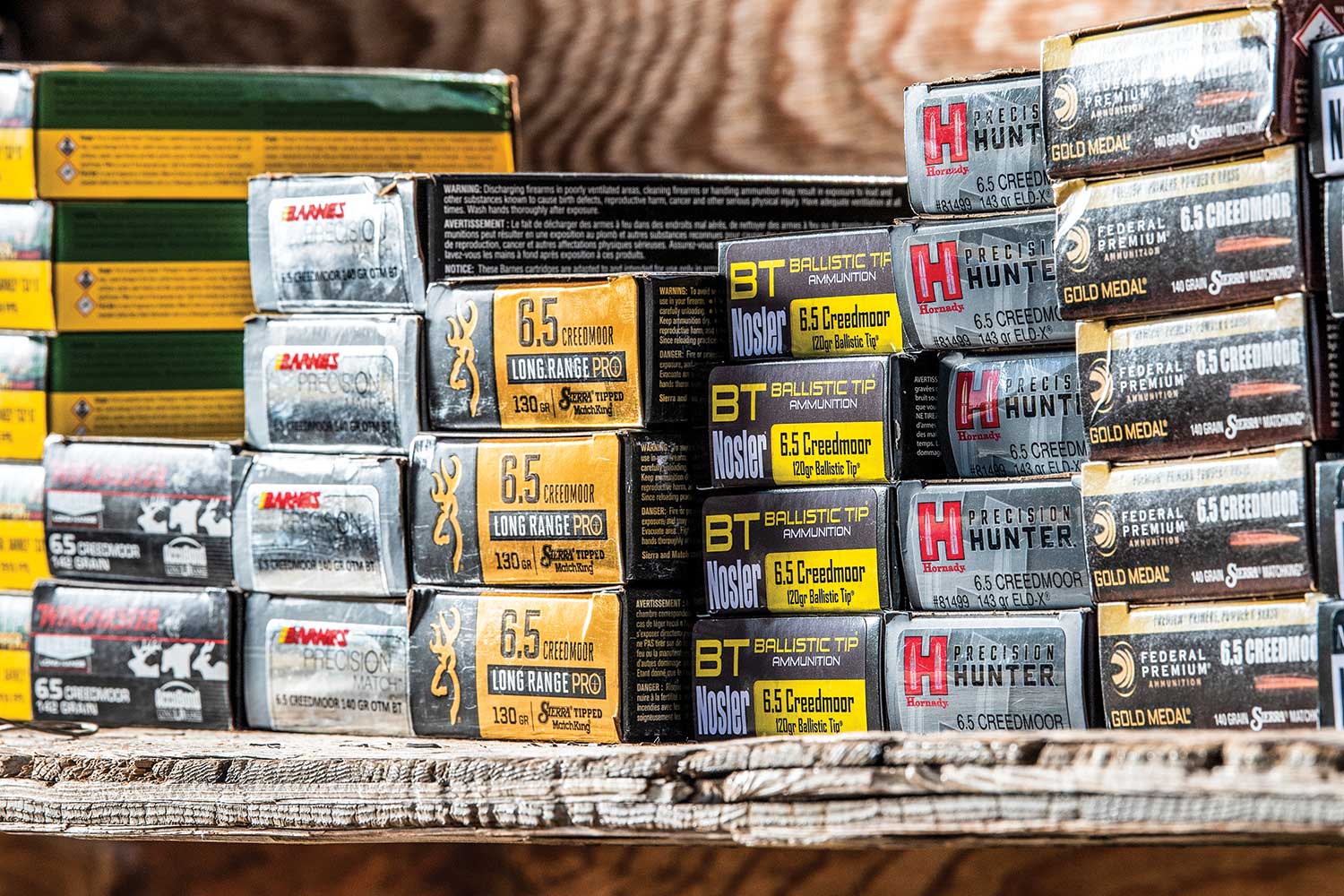
We do the same for the shotguns. We shoot clay targets coming, going, and crossing—in singles, pairs, and even triples. We start with guns held low, pre-mounted, and even with guns empty.
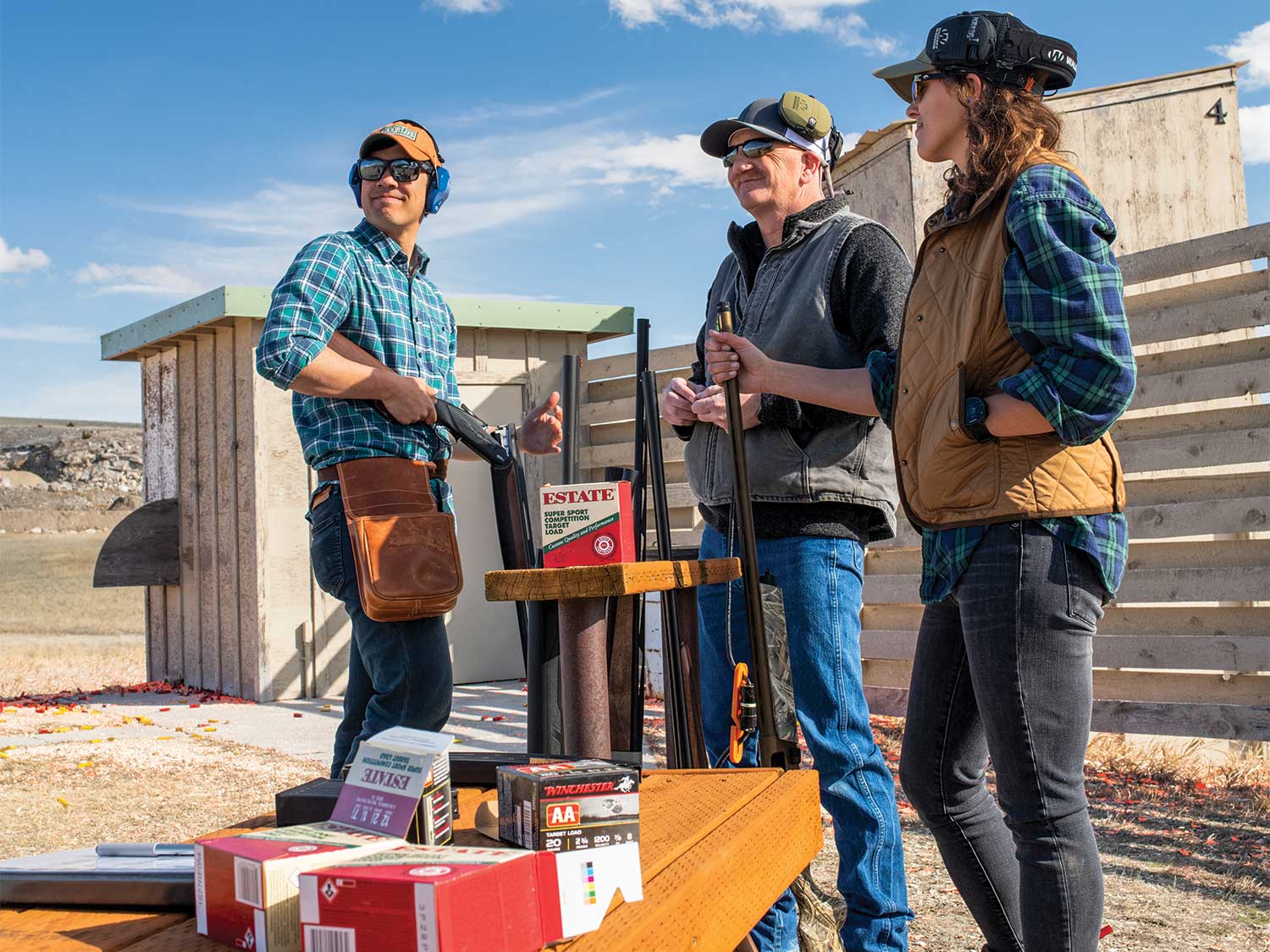
During the last phase, we go over the guns with a detective’s eye, analyzing fit and finish, workmanship, and other details of how they were manufactured.
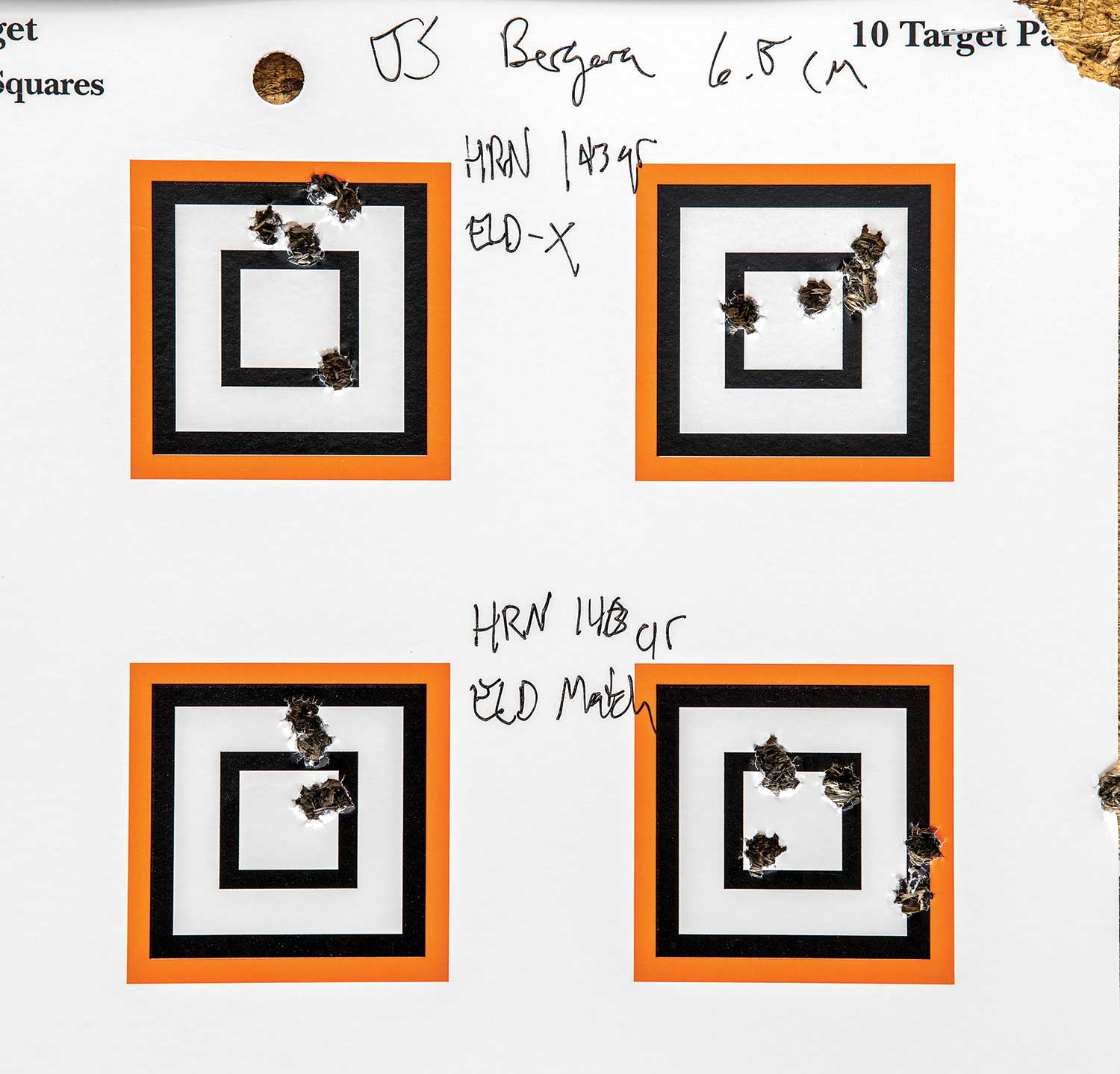
At the end of the week, we score each firearm individually, plug the data into a spreadsheet, and figure out the overall winners and order of finish.

